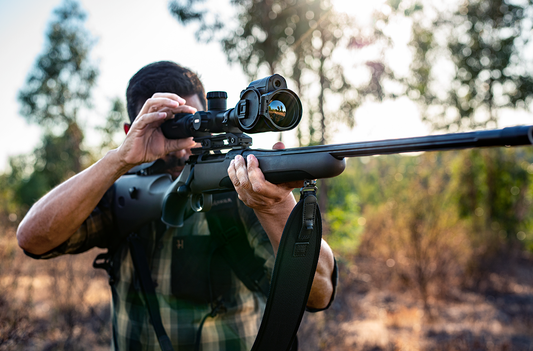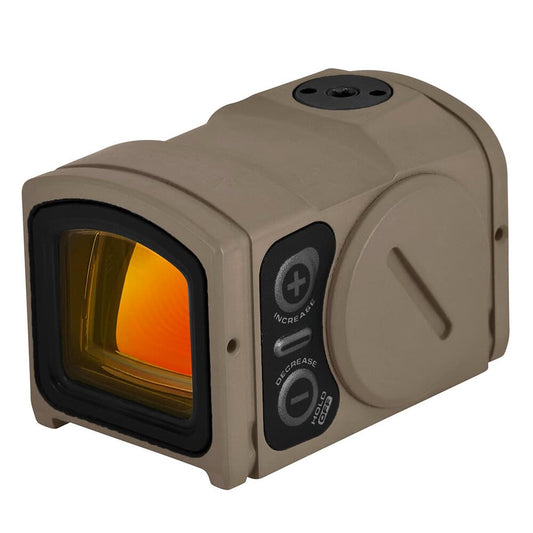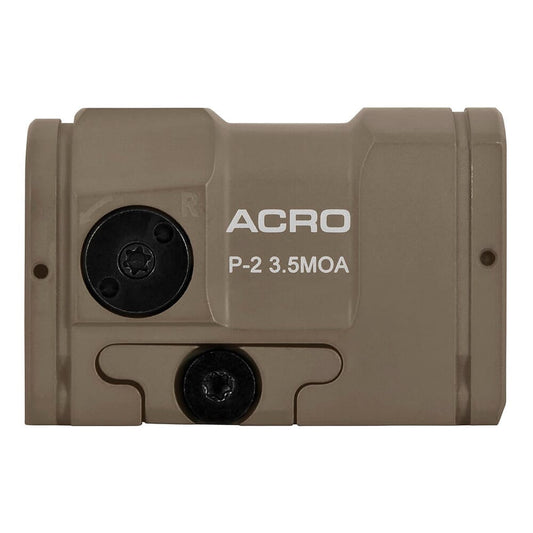

Pulsar Thermion DUO Multispectral Thermal Rifle Scope DXP55 offers versatile functionality for hunting in varying conditions. It features a unique combination of thermal imaging and a 4K resolution daytime channel, allowing you to spot game effectively at any time, whether in low light or during daylight. The First Focal Plane design ensures that reticle subtensions remain accurate across all magnification levels, enhancing your shooting precision.
Equipped with an advanced zeroing system and high-sensitivity sensor, this rifle scope makes tracking fast-moving targets straightforward. The adjustable brightness and smoothing filters minimize eye strain during extended use, making it comfortable for long hours in the field. The rugged construction ensures durability, providing reliable performance in harsh weather conditions.
Features:
- UNMATCHED VERSATILITY for seamless transitions between day and night hunting.
- 4K RESOLUTION enhances color imagery for better visibility in challenging conditions.
- HIGH-SENSITIVITY SENSOR detects minute temperature differences for reliable target identification.
- USER-FRIENDLY ZEROING simplifies aiming adjustments, ensuring accurate shots every time.
- COMFORTABLE OBSERVATION features adjustable brightness and smoothing filters for prolonged use.
- ADVANCED IMAGE PROCESSING improves clarity and contrast, revealing critical details.
- WIDE FIELD OF VIEW allows easy tracking of moving targets during hunts.
- RUGGED CONSTRUCTION withstands harsh weather, ensuring reliability in any situation.
Technical Specifications Table
| Specification | Details |
|---|---|
| Magnification | Up to 5x |
| Lens Diameter | 55mm |
| Weight | 1.7 kg |
| Dimensions | 350 x 100 x 70 mm |
| Material | Aluminum housing |
What’s in the Box?
- Thermal Rifle Scope
- Lens covers
- Padded carrying case
- User manual
- Neck strap
Customer Reviews
"Absolutely essential for my hunting trips—works flawlessly in any condition!"
"The clarity is unmatched! I can spot game from a distance without any hassle."
"Easy to use and set up. This rifle scope has transformed my way of hunting!"
FAQ
How does the thermal channel perform in heavy fog?
The Pulsar Thermion DUO DXP55 excels in low visibility conditions, thanks to its high-sensitivity sensor, which captures even the slightest temperature differences, ensuring effective target identification.
Can it be used for daytime hunting?
Absolutely! The 4K resolution daytime channel produces vibrant colors and clear imagery, making it ideal for any hunting scenario, day or night.
Similar Models
Looking for more advanced optics? Explore our full collection of Pulsar products, including the Pulsar Trail LRF for integrated laser rangefinding and the Pulsar Digex for superior digital night vision. Elevate your hunting experience with our exceptional range tailored to your needs!
You May Also Like
Here’s some of our most similar products people are buying. Click to discover trending style.








